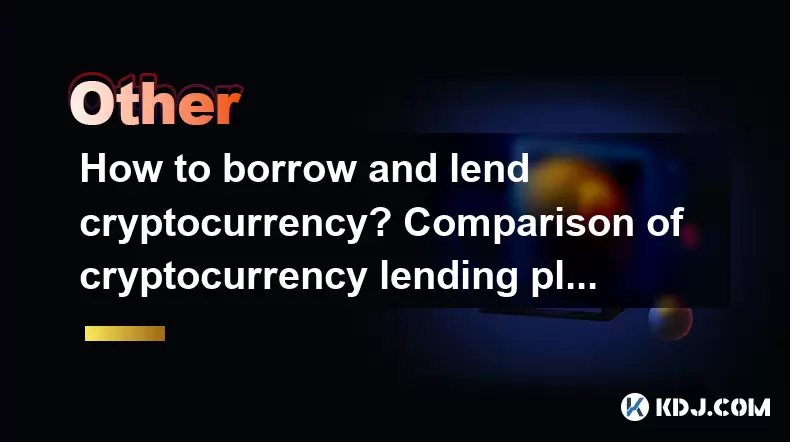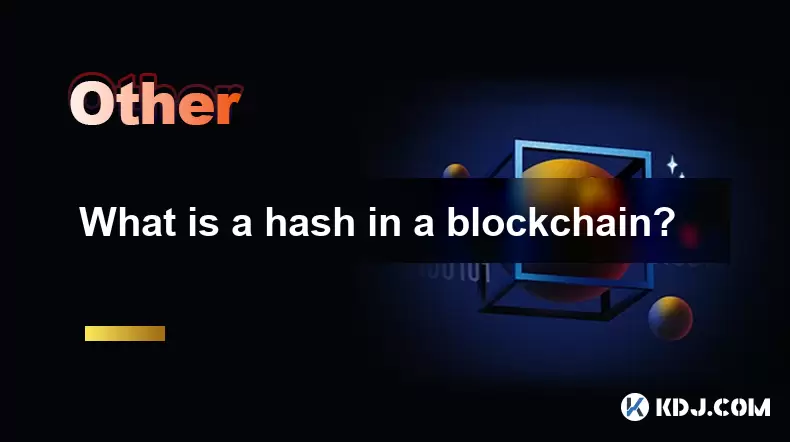-
 Bitcoin
Bitcoin $113900
-1.39% -
 Ethereum
Ethereum $3517
-4.15% -
 XRP
XRP $3.009
1.59% -
 Tether USDt
Tether USDt $0.9997
-0.04% -
 BNB
BNB $766.8
-1.41% -
 Solana
Solana $164.6
-2.38% -
 USDC
USDC $0.9998
-0.02% -
 TRON
TRON $0.3277
0.65% -
 Dogecoin
Dogecoin $0.2023
-1.67% -
 Cardano
Cardano $0.7246
0.05% -
 Hyperliquid
Hyperliquid $38.27
-4.77% -
 Sui
Sui $3.528
-0.52% -
 Stellar
Stellar $0.3890
-0.73% -
 Chainlink
Chainlink $16.16
-2.69% -
 Bitcoin Cash
Bitcoin Cash $539.9
-4.38% -
 Hedera
Hedera $0.2425
-2.00% -
 Avalanche
Avalanche $21.71
-0.97% -
 Toncoin
Toncoin $3.662
5.73% -
 Ethena USDe
Ethena USDe $1.000
-0.02% -
 UNUS SED LEO
UNUS SED LEO $8.964
0.35% -
 Litecoin
Litecoin $107.7
2.33% -
 Shiba Inu
Shiba Inu $0.00001223
-0.40% -
 Polkadot
Polkadot $3.617
-0.97% -
 Uniswap
Uniswap $9.052
-2.49% -
 Monero
Monero $295.1
-3.79% -
 Dai
Dai $0.9999
0.00% -
 Bitget Token
Bitget Token $4.315
-1.85% -
 Pepe
Pepe $0.00001060
0.11% -
 Cronos
Cronos $0.1342
-2.72% -
 Aave
Aave $256.0
-0.87%
How to borrow and lend cryptocurrency? Comparison of cryptocurrency lending platforms
Cryptocurrency lending lets users earn interest by depositing assets, while borrowing allows loans against crypto collateral, offering liquidity without selling.
Jun 15, 2025 at 04:56 pm

Understanding the Basics of Cryptocurrency Lending and Borrowing
Cryptocurrency lending and borrowing have become increasingly popular as more individuals seek to leverage their digital assets without selling them. In simple terms, cryptocurrency lending involves depositing your crypto into a platform where others can borrow it, usually for interest. Conversely, cryptocurrency borrowing allows users to take out loans using their crypto as collateral.
These processes are facilitated through various platforms that act as intermediaries between lenders and borrowers. The mechanisms typically rely on smart contracts or centralized systems, depending on whether the platform is decentralized or centralized. Users must understand the differences and risks associated with each before engaging in any lending or borrowing activity.
How Does Cryptocurrency Lending Work?
Lenders earn interest by locking up their cryptocurrency in a lending pool or account. These funds are then made available to borrowers who need liquidity. Interest rates can vary based on supply and demand dynamics within the market. Some platforms offer fixed rates, while others use variable rates determined algorithmically.
- Choose a lending platform that supports the cryptocurrency you own.
- Create an account and complete verification if required.
- Deposit your cryptocurrency into the designated wallet or lending pool.
- Select a loan term, if applicable, or opt for flexible lending.
- Earn interest passively as borrowers repay their loans.
It's important to note that some platforms require minimum deposit amounts or lock-up periods, which may affect your liquidity. Always review the terms and conditions before committing your assets.
The Mechanics of Cryptocurrency Borrowing
Borrowers typically need to provide collateral in the form of cryptocurrency to secure a loan. This collateral is held in a smart contract or custodial wallet until the loan is repaid. The loan-to-value (LTV) ratio determines how much you can borrow relative to your deposited collateral.
Here’s how borrowing generally works:
- Register on a lending platform and verify your identity if necessary.
- Deposit collateral such as Bitcoin, Ethereum, or stablecoins.
- Specify the amount you wish to borrow and confirm the interest rate.
- Receive the borrowed funds instantly into your account.
- Repay the loan plus interest within the agreed timeframe to avoid liquidation.
Liquidation occurs when the value of the collateral drops below a certain threshold, triggering automatic sale of the asset to cover the loan. Therefore, monitoring your collateralization ratio is crucial to prevent losses.
Comparison of Top Cryptocurrency Lending Platforms
When choosing a lending or borrowing platform, several factors should be considered: supported cryptocurrencies, interest rates, security measures, and user interface. Here's a comparison of some of the most popular platforms:
1. BlockFi
- Supports major coins like BTC, ETH, and stablecoins.
- Offers competitive interest rates with monthly payouts.
- Requires KYC verification.
- Provides borrowing services with flexible repayment options.
2. Celsius Network
- Allows both lending and borrowing with no fees.
- Interest rates vary based on market conditions.
- Fully custodial platform; no control over private keys.
- High-yield promotions during special campaigns.
3. Nexo
- Instant crypto credit line available.
- Offers instant interest payments every second.
- User-friendly mobile app.
- Supports fiat withdrawals backed by crypto collateral.
4. Aave (Decentralized)
- Non-custodial platform built on Ethereum.
- Variable and stable interest rates governed by community.
- Flash loans and other advanced DeFi features.
- No KYC required.
Each platform has its pros and cons. For example, centralized platforms often offer better customer support, while decentralized platforms give users full control over their assets but may require technical knowledge to navigate.
Risks Involved in Crypto Lending and Borrowing
While the potential for earning passive income or gaining liquidity is attractive, there are significant risks involved in crypto lending and borrowing. These include:
- Smart contract vulnerabilities: Bugs or exploits in code can lead to loss of funds.
- Platform insolvency: If a centralized lender goes bankrupt, users may lose their deposits.
- Market volatility: Rapid price swings can trigger margin calls or liquidation events.
- Regulatory uncertainty: Changes in laws could impact the legality of these services.
To mitigate these risks, users should diversify across multiple platforms, avoid over-leveraging, and choose platforms with strong security audits and transparent operations.
Choosing the Right Platform for Your Needs
The decision to use a particular lending or borrowing platform should be based on individual preferences and financial goals. Consider the following criteria when evaluating platforms:
- Supported cryptocurrencies: Ensure the platform accepts your preferred coins.
- Interest rates and fees: Compare yields and borrowing costs across platforms.
- Security features: Look for insurance, cold storage, and audit history.
- User experience: A clean interface and responsive support team enhance usability.
- Withdrawal flexibility: Check if there are lock-in periods or early withdrawal penalties.
By carefully analyzing these aspects, you can select a platform that aligns with your investment strategy and risk tolerance.
Frequently Asked Questions
Q: Can I lend my cryptocurrency without locking it up?
Yes, many platforms allow flexible lending where you can withdraw your funds at any time. However, this may result in lower interest rates compared to fixed-term deposits.
Q: What happens if the borrower defaults on a loan?
In most cases, the collateral provided by the borrower is automatically liquidated to cover the outstanding debt. This ensures lenders receive their principal back even if the borrower fails to repay.
Q: Is crypto lending taxable?
Yes, earned interest from lending is typically considered taxable income. You should consult a tax professional or use crypto tax software to ensure compliance with local regulations.
Q: Are decentralized lending platforms safe?
While they eliminate counterparty risk by removing intermediaries, decentralized platforms carry risks related to smart contract failures. Always research the protocol and check for third-party audits before depositing funds.
Disclaimer:info@kdj.com
The information provided is not trading advice. kdj.com does not assume any responsibility for any investments made based on the information provided in this article. Cryptocurrencies are highly volatile and it is highly recommended that you invest with caution after thorough research!
If you believe that the content used on this website infringes your copyright, please contact us immediately (info@kdj.com) and we will delete it promptly.
- DeFi Token Summer Gains: Is Mutuum Finance the Real Deal?
- 2025-08-02 18:30:12
- Bitcoin, Realized Price, and the Top: Are We There Yet?
- 2025-08-02 18:30:12
- Dogwifhat (WIF) Rally: Will the Meme Coin Bite Back?
- 2025-08-02 19:10:12
- PayFi Heats Up: Tron's AMA Recap & TRX's Bullish Nasdaq Debut
- 2025-08-02 19:10:12
- ARK Invest, Coinbase, and BitMine: Decoding the Crypto Investment Shuffle
- 2025-08-02 19:15:23
- JasmyCoin Under Pressure: Bears Grip Tight, Testing Lower Support
- 2025-08-02 19:15:23
Related knowledge

What is the difference between on-chain and off-chain transactions?
Aug 02,2025 at 04:22pm
Understanding On-Chain TransactionsOn-chain transactions refer to digital asset transfers that are recorded directly on a blockchain ledger. These tra...

What is the double-spending problem and how does blockchain prevent it?
Aug 02,2025 at 01:07pm
Understanding the Double-Spending ProblemThe double-spending problem is a fundamental challenge in digital currency systems where the same digital tok...

What is the difference between a blockchain and a database?
Aug 01,2025 at 09:36pm
Understanding the Core Structure of a BlockchainA blockchain is a decentralized digital ledger that records data in a series of immutable blocks linke...

How does blockchain handle scalability?
Aug 02,2025 at 02:58pm
Understanding Blockchain Scalability ChallengesBlockchain scalability refers to a network's ability to handle an increasing volume of transactions wit...

What is a hash in a blockchain?
Aug 02,2025 at 05:28am
Understanding the Concept of Hash in BlockchainA hash in the context of blockchain technology refers to a unique digital fingerprint generated by a cr...

What is a hash in a blockchain?
Aug 02,2025 at 04:43am
Understanding the Concept of Hash in BlockchainA hash in the context of blockchain technology refers to a unique digital fingerprint generated by a cr...

What is the difference between on-chain and off-chain transactions?
Aug 02,2025 at 04:22pm
Understanding On-Chain TransactionsOn-chain transactions refer to digital asset transfers that are recorded directly on a blockchain ledger. These tra...

What is the double-spending problem and how does blockchain prevent it?
Aug 02,2025 at 01:07pm
Understanding the Double-Spending ProblemThe double-spending problem is a fundamental challenge in digital currency systems where the same digital tok...

What is the difference between a blockchain and a database?
Aug 01,2025 at 09:36pm
Understanding the Core Structure of a BlockchainA blockchain is a decentralized digital ledger that records data in a series of immutable blocks linke...

How does blockchain handle scalability?
Aug 02,2025 at 02:58pm
Understanding Blockchain Scalability ChallengesBlockchain scalability refers to a network's ability to handle an increasing volume of transactions wit...

What is a hash in a blockchain?
Aug 02,2025 at 05:28am
Understanding the Concept of Hash in BlockchainA hash in the context of blockchain technology refers to a unique digital fingerprint generated by a cr...

What is a hash in a blockchain?
Aug 02,2025 at 04:43am
Understanding the Concept of Hash in BlockchainA hash in the context of blockchain technology refers to a unique digital fingerprint generated by a cr...
See all articles

























































































